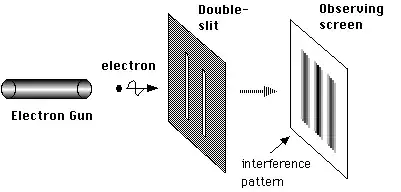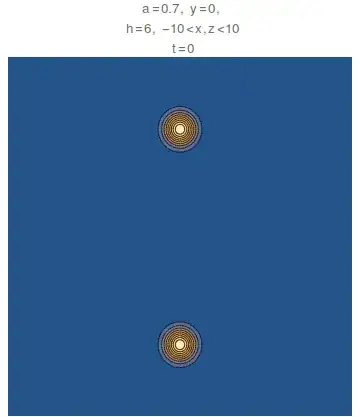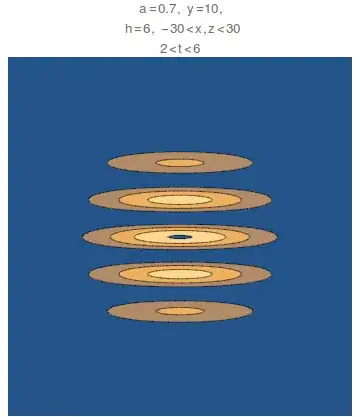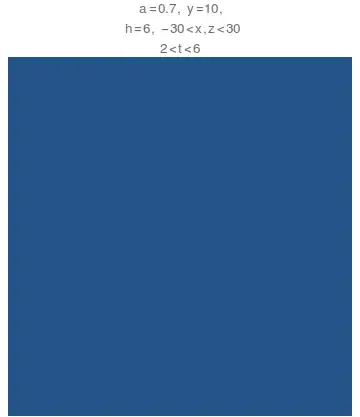I have never seen the wavefunction for this experiment and would like to know how to derive it using the Schrodinger equation. I specifically want to see how the electron wave function leaves the source, then goes through the slits, and produces the characteristic diffraction pattern on the other end. 
- 220,844
1 Answers
Well, there are many things you could do. You could:
- consider two gaussian beams (the linked article is for electrodynamics)
- apply some paraxial approximation (which would be more appropriate to treat electrons with a high forward momentum)
- do a cheap/cheesy symmetric point source approximation using Green's functions.
I can do number three for you :)
If you take $\hbar=1$, $m=\frac{1}{2}$, then the equation in question becomes $i \dot{\varphi}+\nabla^2 \varphi=0$, which has a solution:
$$\left(\frac{a}{a+2 i t}\right)^{3/2} \exp \left( {-\frac{x^2+y^2+z^2}{2 a+4 i t}}\right) $$
Then you can add two of these point sources together and translate them:
$$\left(\frac{a}{a+2 i t}\right)^{3/2} \exp \left( {-\frac{x^2+y^2}{2 a+4 i t}}\right)\left(\exp\left( \frac{(z-h)^2}{2 a+4 i t} \right)+\exp\left( \frac{(z+h)^2}{2 a+4 i t} \right) \right) $$
The fact that these wave packets aren't moving is a bit of a cheat, but you can always "boost" to a moving frame by using the answer here: Galilean invariance of the Schrodinger equation (or if you're really on top of your quantum mechanics game you can apply the translation operator $e^{-i\hat{x}\cdot \hat{p}}$)
Voila, an appropriate wavefunction.
Here's an XZ slice of the initial condition $|\psi|^2$:
An XZ slice of $|\psi|^2$ at a later time and offset Y:
And an animation of $|\psi|^2$ (uploaded on imgur)
I used Mathematica to expand psi squared of the previous equation. You can see exactly where the interference comes in (the cosine term)
$$|\psi(x,y,z,t)|^2=\frac{\left(a^2\right)^{3/2}}{\left(a^2+4 t^2\right)^{3/2}} \cdot \left(\exp\left(-\frac{a \left(h^2+2 h z+x^2+y^2+z^2\right)}{a^2+4 t^2}\right)+\exp\left(-\frac{a \left(h^2-2 h z+x^2+y^2+z^2\right)}{a^2+4 t^2}\right)+2 \cos \left(\frac{4 h t z}{a^2+4 t^2}\right) \exp \left(-\frac{a \left(h^2+x^2+y^2+z^2\right)}{a^2+4 t^2}\right)\right)$$
So the oscillatory/important part is $\cos \left(\frac{4 h t z}{a^2+4 t^2}\right)$. This brings up the obvious problem with this approach: it doesn't directly provide the nice result that you usually want, relating the momentum of the particle to the "wavelength" of the interference pattern. The interference pattern reaches its maximum frequency at $t=\frac{a}{2}$, so I'll leave it as an exercise to the reader to see if there's a relation between the momentum ($\hat{p}^2$ maybe?), the de Broglie wavelength, and the usual peak/trough formulas diffraction formulas(this sort of thing)


